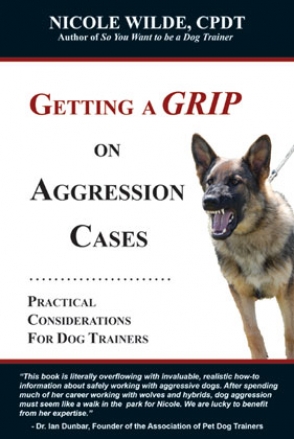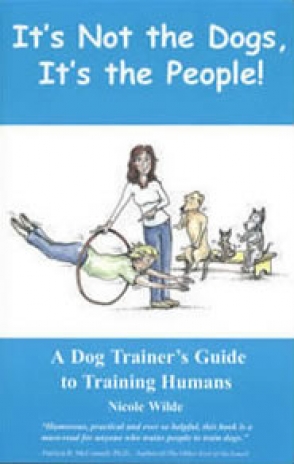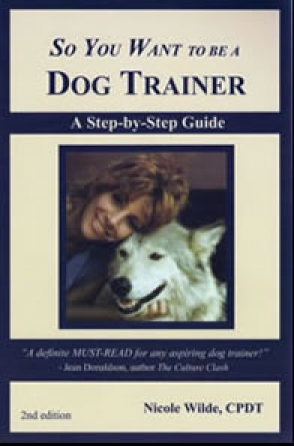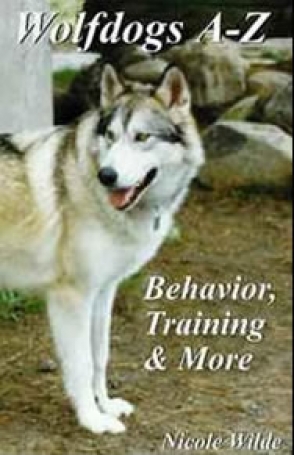There is a lot more to working with aggression cases than mastering methods and techniques.
Alpha Roll or Alpha Role?
If you’re a dog owner, you might have seen television shows or read books that recommend a technique called the “alpha roll.” This old-fashioned method for “showing the dog who’s boss” or punishing a dog for bad behavior consists of forcing the dog onto his back. Once there, variations include standing over the dog, staring at him, growling at him, or simply pinning him until he “submits” and stops struggling.
Proponents of the alpha roll claim it helps dogs to understand who is the leader. The maneuver is based on what wolves do to each other, they explain. As it turns out, the original information about wolves “alpha rolling” each other was based on observational data gathered from a study of wolves that was later disproved. On a personal note, in addition to being a professional dog trainer, my background includes working with wolves and wolfdog mixes at a rescue sanctuary. In my fifteen-plus years spent with these animals, I never once saw one force another onto its back to prove dominance. What I have seen is one wolf look at another and curl a lip ever so slightly; that tiny, subtle signal was enough to start the other wolf angling his head and body away. If that lip curl turned into an agonistic pucker (that National Geographic “look at my pearly whites” expression), growl, snarl, or intensified in any other way, you can bet the wolf on the receiving end would eventually end up on his back—voluntarily. The key word in that explanation is “voluntarily.” If a wolf truly forces another wolf onto its back, it’s not a discussion about rank—it’s an aggressive act that may well result in injury or even death.
Some people believe that dogs view us as other dogs when we perform the alpha roll. Let’s get real. Dogs simply don’t view us as other dogs. (Thank goodness for small favors—that butt-sniffing greeting would get old fast!) But for the sake of argument, let’s say they did; would you really want your dog to be frightened of you, and think that your intention was to cause him harm?
Take it from me, a 5’2” petite woman whose dogs all outweigh her, and who has worked and lived with both dogs and wolves: you can absolutely establish leadership without using physical force. The majority of it is in your demeanor. Some people are natural leaders. They are calm and confident, and when they have something to say, the communication is clear and direct. Think Clint Eastwood. A strong leader does not need to prove a thing, and is certainly not a bully. In fact, the dogs or wolves you see squabbling for rank are the wanna-be alphas, the middle-rankers. With your own dog, be consistent in your rules and boundaries, and keep your verbal communications direct. Use hand signals if your dog has been taught what they mean, but keep other gestures to a minimum so as not to confuse him.
Control the resources—food, treats, toys, access to walks, and anything else your dog finds valuable—and ask him to do something to earn each one, even if it’s a simple sit. If your dog does something you don’t like, respond appropriately. That might mean he gets a time out for nipping at your child’s pants leg, or, if he’s vying for your attention by jumping up, you simply ignore him. What those responses have in common is they teach dogs that those tactics simply don’t work, which results in the unwanted behavior happening less often. They also don’t include a human scaring the dog by physically manhandling him.
By taking the alpha role rather than using the alpha roll and other strong-arm tactics, you will earn your dog’s trust and respect, and enhance the bond between you.










